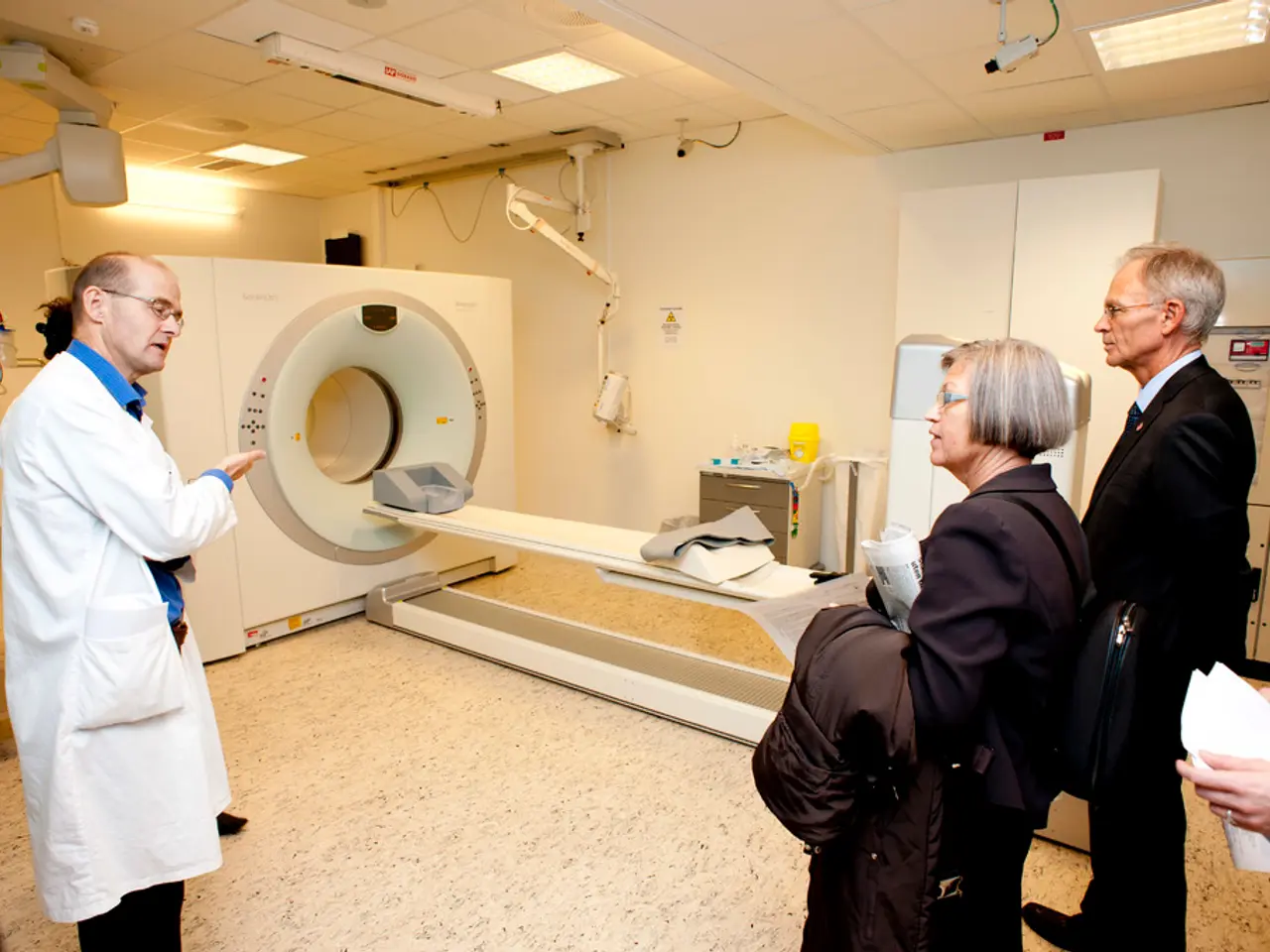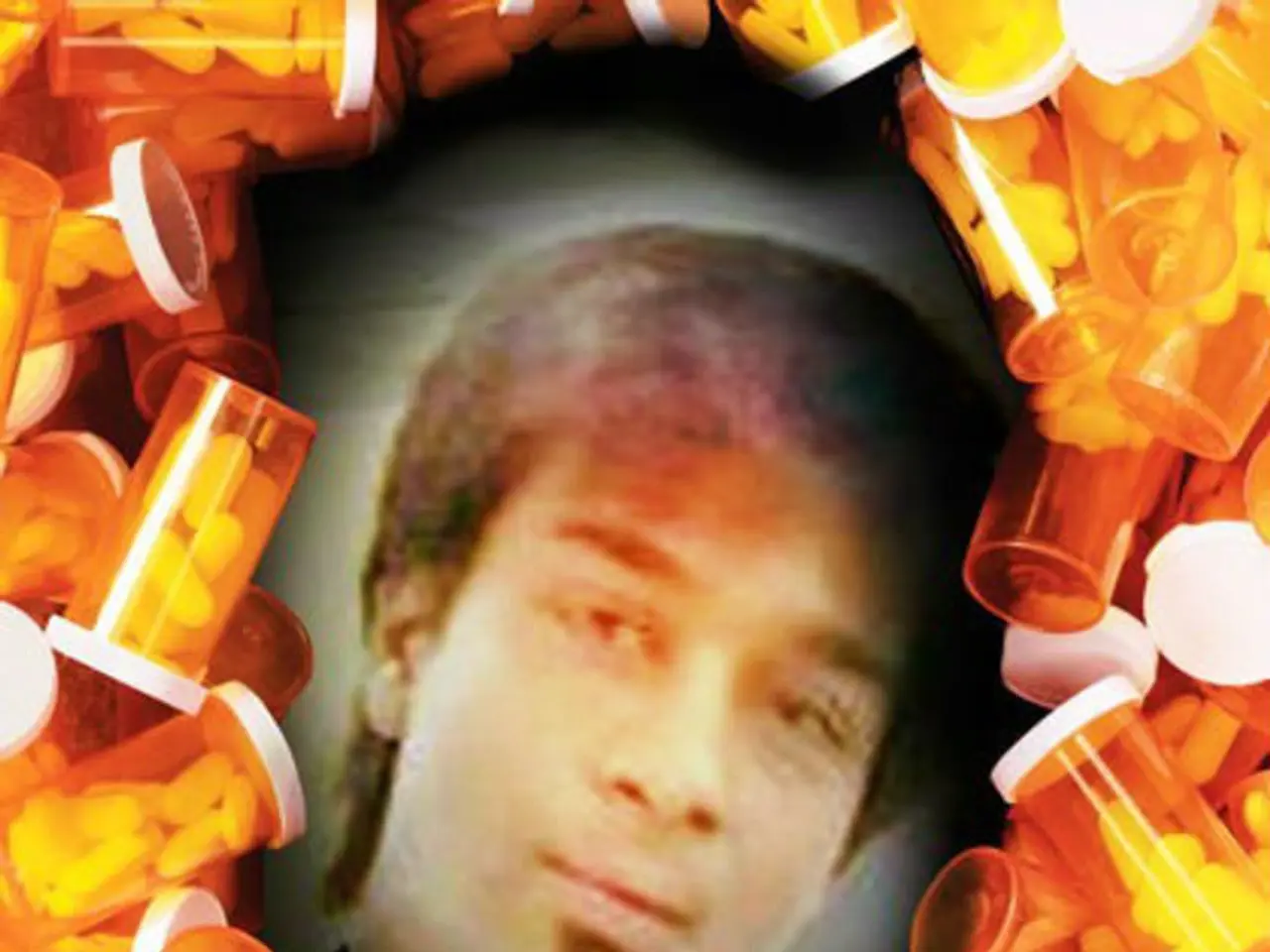Child Meningitis: Signs, Root Causes, and Further Details
Meningitis, an inflammation of the protective tissues and fluid surrounding the brain and spinal cord, is a serious health concern in children. This condition can be caused by various agents, including viruses, bacteria, and fungi, each with distinct symptoms and treatment approaches.
Viral Meningitis
Common viruses causing meningitis in children include enteroviruses, herpes simplex virus type 2 (HSV2), cytomegalovirus (CMV), Epstein-Barr virus (EBV), varicella-zoster virus (VZV), mumps, measles, arboviruses, and others. Symptoms often include fever, headache, neck stiffness, irritability, photophobia, and sometimes encephalitis signs if the brain is involved. Treatment is mostly supportive, and antiviral medication like acyclovir is used specifically for herpesvirus infections (HSV and VZV).
Bacterial Meningitis
Bacterial meningitis is more serious than viral meningitis and can lead to long-lasting effects such as seizures, hearing and vision loss, neurological damage, and cognitive impairment. Common bacteria include Neisseria meningitidis (meningococcus), Haemophilus influenzae (especially type b), Streptococcus pneumoniae (pneumococcus), and others. Symptoms include abrupt onset of fever, severe headache, neck stiffness, vomiting, altered mental status, photophobia, seizures, and sometimes purpuric rash (in meningococcal infection). Urgent intravenous antibiotics tailored to the suspected/pathogen identified are the primary treatment, and corticosteroids may be used adjunctively to reduce inflammation.
Fungal Meningitis
Fungal meningitis is less common but can still occur, often in immunocompromised children. Common fungi include Cryptococcus, Candida spp., Aspergillus spp., and Coccidioides. Symptoms often present as chronic meningitis with a more insidious onset compared to bacterial meningitis. Treatment involves a prolonged course of antifungal therapy starting with intravenous amphotericin B followed by oral antifungals like fluconazole or other antifungals.
Timely medical attention can make meningitis in children treatable and curable. Diagnosis often involves a lumbar puncture to analyze cerebrospinal fluid, which helps distinguish between viral, bacterial, and fungal meningitis. Early diagnosis and treatment are critical, especially for bacterial and fungal meningitis, due to the risk of severe complications and mortality.
This overview represents the most common pathogens seen in children and their typical clinical courses and treatments based on recent medical literature. Parents and caregivers must inform the doctor about other prescribed antibiotics or medicines that may cause allergies before the diagnostic examination. Hib meningitis is the most common form of bacterial meningitis in infancy, and non-polio enteroviruses are the leading cause of viral meningitis in the United States.
Viral meningitis is one of the most common causes of meningitis in children, with over 70% of these infections occurring in children under the age of five. A doctor or medical professional will collect a sample from the child for further investigation, such as a nose or throat swab, a sample of the child's stool, a finger prick to draw blood, or a spinal tap or lumbar puncture to draw fluid from around the spinal cord.
A study involving 61 people found that those with a history of bacterial meningitis had poorer postural control and struggled with balance and steadiness several years after recovering from the infection, and reported feelings of dizziness, vertigo, light-headedness, and visual impairments. Fungal meningitis is more common in children with a hematological disease such as leukemia or those who have undergone a hematopoietic stem cell or solid organ transplant.
There are also vaccines available for meningitis that help prevent the disease. Scientists have developed several vaccines that offer protection against meningitis, such as the meningococcal, Haemophilus influenzae type B (Hib), and pneumococcal vaccines. The use of catheters, ventilators, and other invasive devices also increases the risk of fungal meningitis in children.
The duration of treatment for fungal meningitis depends on the type of fungus causing the infection, the child's symptoms, and the overall health of their immune system. The treatment for fungal meningitis is a long course of high-dose antifungal medicines, such as amphotericin B and fluconazole, which are usually administered directly into a vein in the hand through an IV. Bacterial meningitis may result in brain damage, hearing loss, or a learning disability in some people, and can be fatal in children. Severe infection or delayed diagnosis of meningitis can lead to long-term effects.
References: [1] Centers for Disease Control and Prevention. (2021). Meningitis. https://www.cdc.gov/meningitis/ [2] UpToDate. (2021). Meningitis in children. https://www.uptodate.com/contents/meningitis-in-children [3] American Academy of Pediatrics. (2018). Meningitis. https://www.healthychildren.org/English/health-issues/conditions/infections/Pages/Meningitis.aspx [4] National Institute of Neurological Disorders and Stroke. (2021). Meningitis Fact Sheet. https://www.ninds.nih.gov/Disorders/All-Disorders/Meningitis-Information-Page
Science has shown that vaccines like the meningococcal, Hib, and pneumococcal vaccines can prevent meningitis, a potentially life-threatening disease that can lead to chronic mental health conditions, learning disabilities, hearing loss, and long-term effects such as seizures and cognitive impairment. It's important to note that fungal meningitis, while less common, often occurs in children with chronic diseases or compromised immune systems. Additionally, the use of invasive medical devices like catheters and ventilators can increase the risk of fungal meningitis. In some cases, even when treated promptly, meningitis can still result in blocked health-and-wellness opportunities and affect one's mental health due to the long-lasting effects it can have on medical-conditions.




